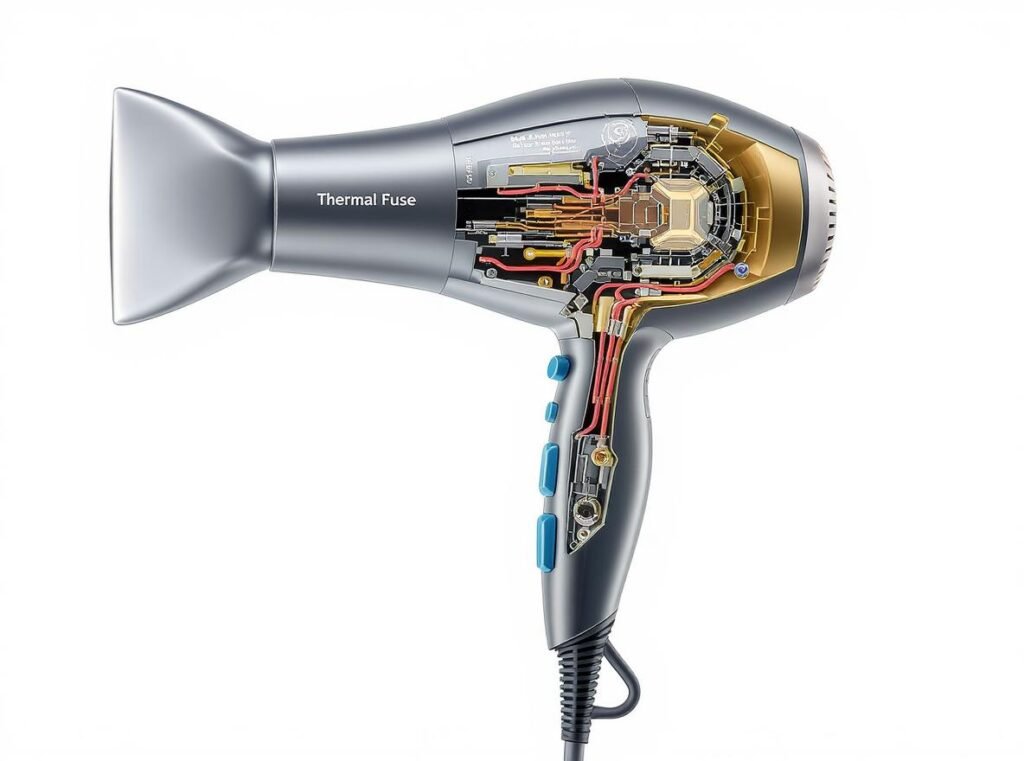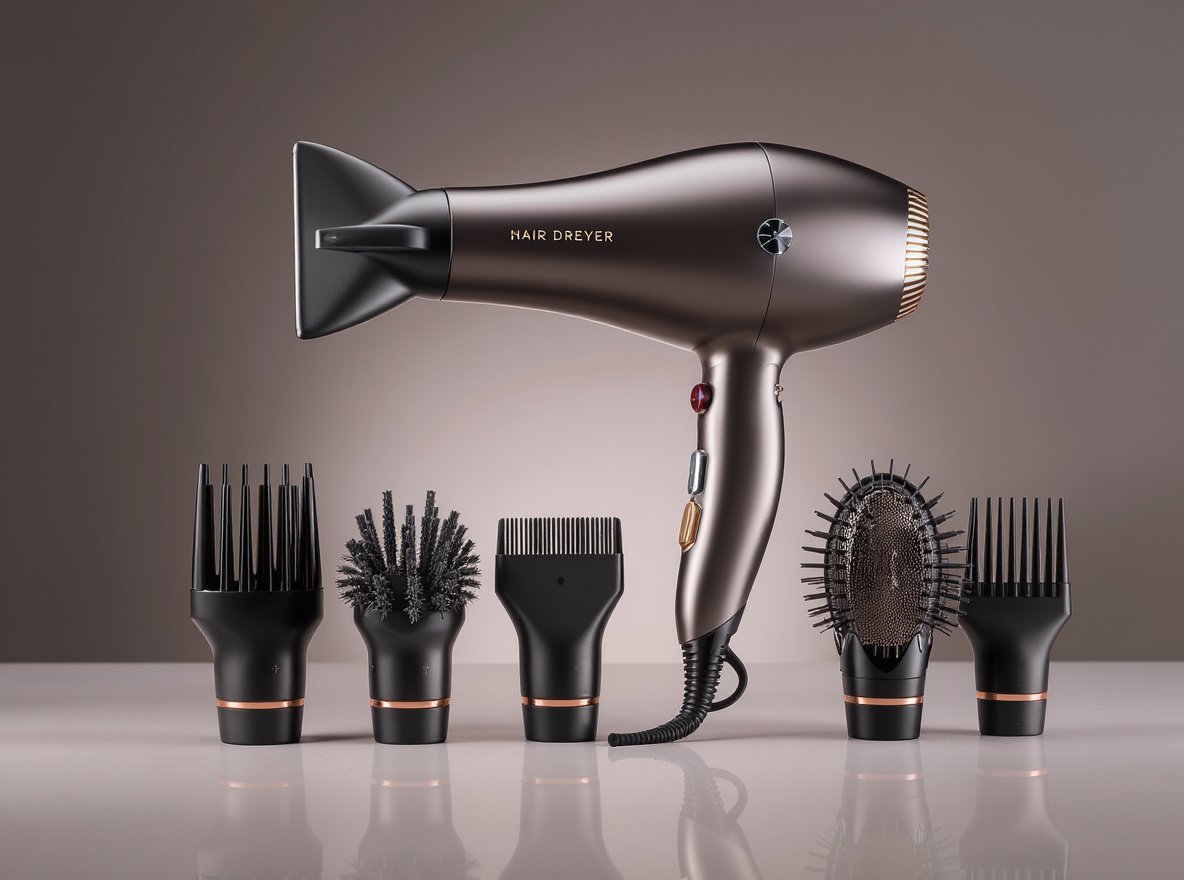When customers ask about hair dryer safety features, understanding fuses becomes crucial for your business. Many retailers and distributors wonder whether hair dryers contain protective components, especially after experiencing customer complaints about electrical issues or sudden device failures.
Yes, hair dryers do have fuses – specifically thermal fuses (also called thermal cutoffs or thermal limiters) that protect against overheating. These essential safety devices automatically shut down the heating element when temperatures reach 257°F to 302°F (125°C to 150°C), preventing fire hazards and equipment damage.
Let’s explore everything you need to know about hair dryer fuses to better serve your wholesale customers and ensure product safety compliance.
Table of Contents
ToggleWhat Type of Fuses Do Hair Dryers Use?
Understanding the specific fuse types helps you explain safety features to potential customers and address their concerns about product reliability and regulatory compliance.
Hair dryers use thermal fuses, which are heat-activated safety devices rather than current-based electrical fuses. These one-time-use components permanently break the circuit when temperature limits are exceeded and cannot be reset.
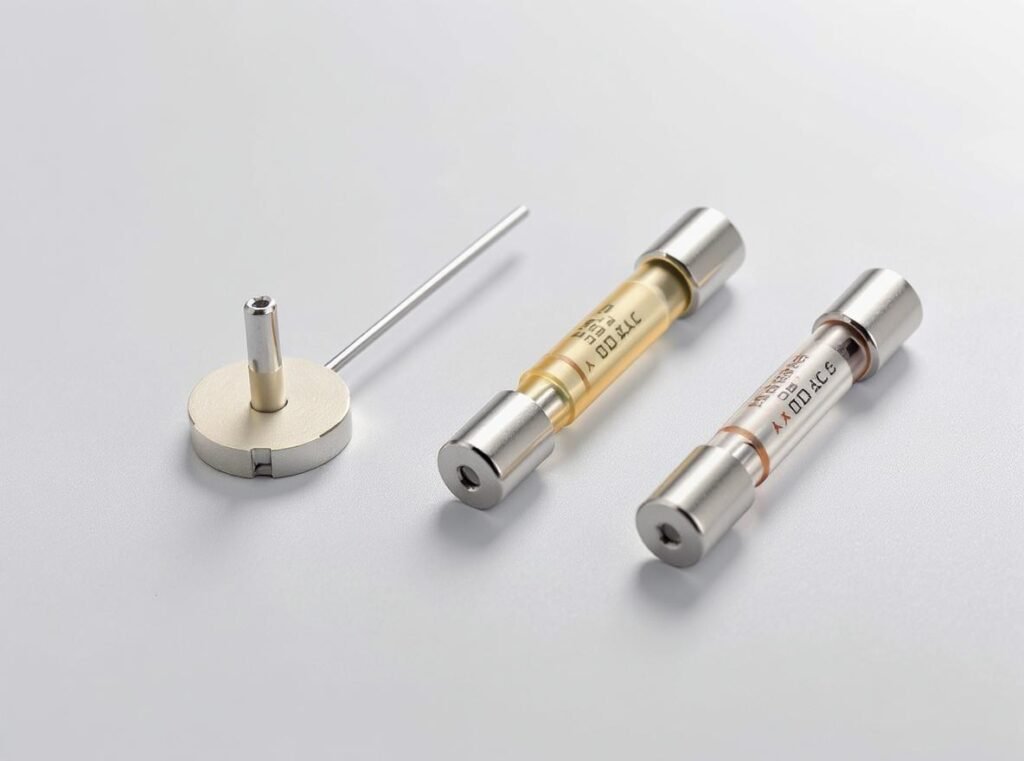
Modern hair dryers incorporate several types of thermal protection devices, each serving critical safety functions in professional and consumer applications.
Primary Thermal Fuse Types
One-Time Thermal Fuses
These permanently break the circuit when temperature limits are exceeded and require replacement after activation. They’re mandated by Consumer Product Safety Commission (CPSC) standards for fire prevention.
Disc-Type Cutoffs
Circular fuses containing a metal disk that bends at high temperatures to break electrical connections. Common in compact hair dryer designs.
Linear Cutoffs
Elongated thermal fuses that function similarly to disc-type models but offer different mounting options for various hair dryer configurations.
Temperature Specifications by Application
| Fuse Type | Temperature Rating | Typical Application |
|---|---|---|
| Consumer Models | 125°C (257°F) | Standard home-use hair dryers |
| Professional Models | 150°C (302°F) | Salon and commercial environments |
| Heavy-Duty Units | Up to 285°C (545°F) | Industrial and specialized applications |
The Laifex P1C incorporates advanced thermal protection with multiple temperature thresholds, providing superior safety compared to single-fuse systems while meeting international safety standards.
Why Are Thermal Fuses Essential for Hair Dryer Safety?
Business owners need to understand why these components matter for customer safety, regulatory compliance, and liability protection.
Thermal fuses serve as the critical last line of defense against fire hazards by cutting power to heating elements when temperatures exceed safe levels. They’re required by CPSC federal safety rules and UL 859 certification standards to prevent the electrical hazards that once made hair dryers dangerous.
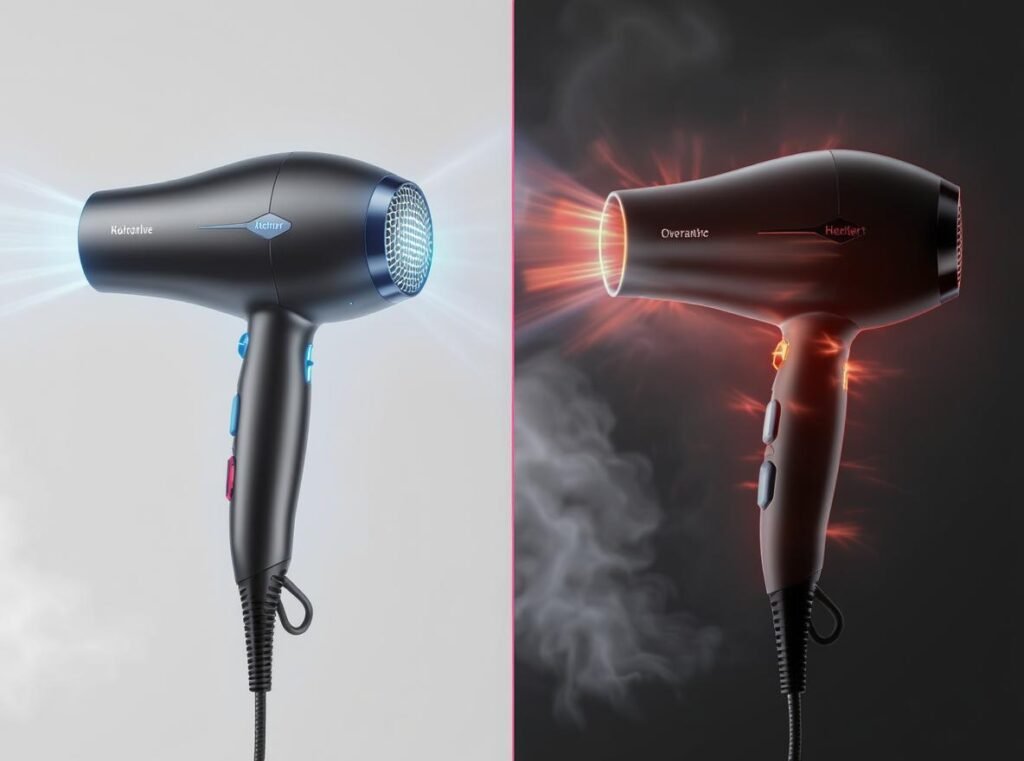
These safety devices have dramatically reduced hair dryer-related accidents and fatalities, making them essential for any business selling electrical appliances.
Regulatory Requirements and Standards
Federal Safety Compliance
- CPSC federal safety rule compliance (16 CFR Part 1120)
- UL 859 certification for household electric grooming appliances
- IEC 60335-2-23 compliance for international markets
Critical Safety Functions
- Fire prevention through automatic power cutoff
- Protection of internal components from heat damage
- User safety by preventing burns and electrical hazards
- Liability protection for manufacturers and retailers
Business Liability Considerations
Without proper thermal protection, hair dryers pose substantial product hazards that can result in costly lawsuits and regulatory actions. Modern safety standards require comprehensive documentation of thermal fuse specifications and testing procedures.
How Do You Know When a Hair Dryer’s Thermal Fuse Has Blown?
Recognizing blown thermal fuses helps customers understand when professional service is needed versus simple troubleshooting, reducing unnecessary returns and warranty claims.
When a thermal fuse blows, the hair dryer will either not turn on at all or will run but produce no heat. Unlike household electrical fuses, thermal fuses show no external signs of failure and require multimeter testing for accurate diagnosis.
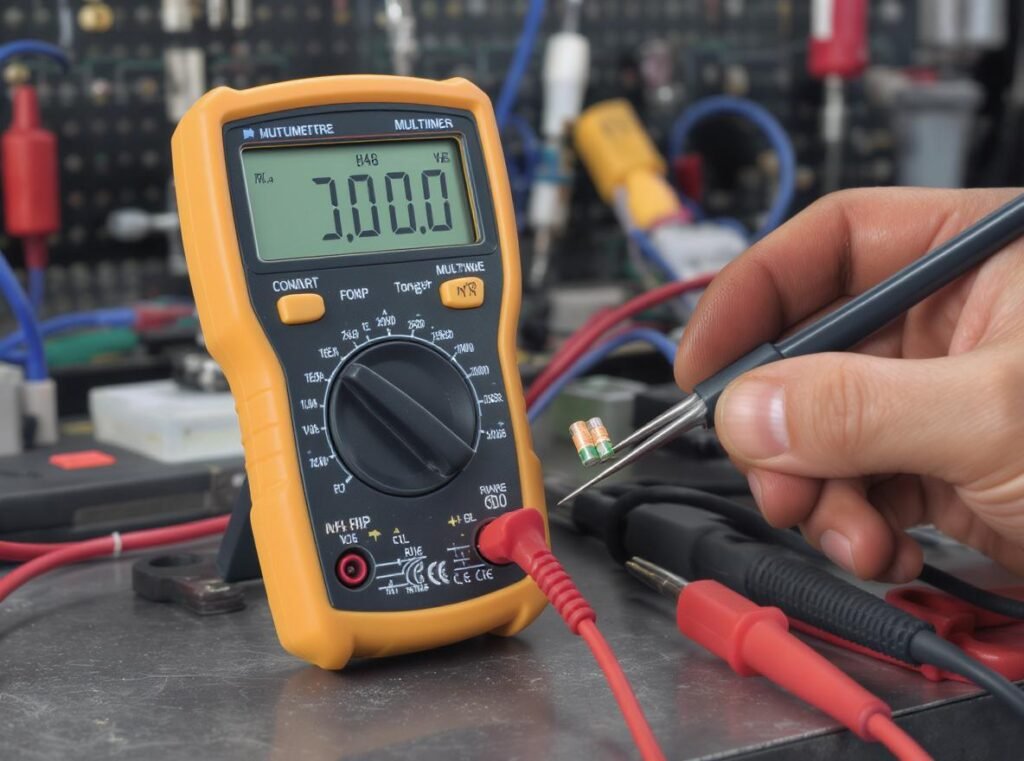
Common Symptoms of Blown Thermal Fuses
- Complete power failure: Unit won’t turn on despite proper electrical connection
- No heat production: Motor runs but heating element remains inactive
- Sudden shutdown: Device stops working during normal operation
- Unresponsive controls: All buttons and switches remain inactive
Professional Testing Methods
Multimeter Testing Procedure
- Set multimeter to continuity or lowest ohm setting
- Touch probes to each fuse terminal
- Good fuse shows 0 ohms or audible beep
- Blown fuse shows infinite resistance (no continuity)
Visual Inspection Limitations
Unlike electrical fuses, thermal fuses show no external damage when blown, making electrical testing the only reliable diagnostic method.
What Causes Hair Dryer Thermal Fuses to Blow?
Understanding common causes helps businesses educate customers about proper usage and maintenance, reducing warranty claims and improving customer satisfaction.
The most common cause of thermal fuse failure is blocked air intake from dust, lint, and hair accumulation, which restricts airflow and causes rapid overheating that exceeds the fuse’s temperature rating.

Primary Failure Causes
Airflow Restrictions
- Blocked air intake vents from dust and debris
- Clogged air outlet preventing hot air escape
- Lint accumulation in internal components
- Hair wrapped around fan mechanisms
Operational Factors
- Excessive continuous use without cooling breaks
- High ambient temperatures during operation
- Voltage fluctuations stressing electrical components
- Poor ventilation in usage environment
Component-Related Failures
| Failure Type | Cause | Prevention Strategy |
|---|---|---|
| Damaged Heating Element | Manufacturing defects or wear | Regular inspection and quality control |
| Faulty Thermostat | Temperature regulation failure | Professional maintenance schedules |
| Electrical Issues | Incorrect voltage supply | Proper electrical system verification |
| Mechanical Wear | Extended use beyond design limits | Rotation between multiple units |
Quality manufacturers like Laifex design their products with enhanced thermal management systems that better withstand challenging operating conditions while maintaining safety standards.
Can You Replace a Hair Dryer’s Thermal Fuse?
This technical question often arises when customers face repair decisions versus replacement purchases, affecting your sales and service strategies.
Yes, thermal fuses can be replaced, but it requires technical skill, proper tools, and exact temperature rating matches. Professional installation is recommended for safety, and root cause identification is essential to prevent repeat failures.
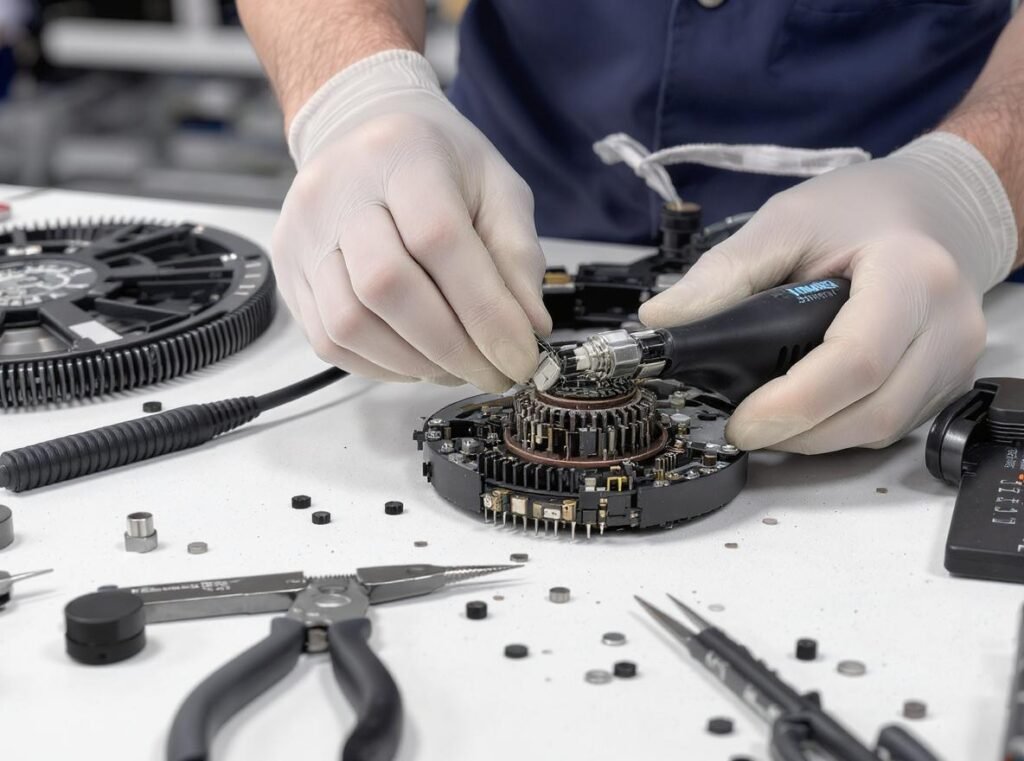
Technical Replacement Requirements
Professional Installation Process
- Complete device disassembly accessing internal components
- Precise thermal fuse location near heating elements
- Proper removal using appropriate tools and techniques
- New fuse installation with correct temperature rating
- Reassembly following manufacturer specifications
Critical Safety Considerations
- Exact temperature rating match for safety compliance
- Professional crimping or spot welding (not soldering)
- Comprehensive testing before returning to service
- Documentation of repair procedures and components
Business Decision Factors
Cost-Benefit Analysis
- Professional repair costs: $25-50 for service
- Replacement costs: $30-150 for new quality units
- Warranty implications and liability concerns
- Customer satisfaction and long-term reliability
When Replacement Makes More Sense
- Multiple component failures indicating systemic issues
- Units over 3 years old with outdated safety features
- Frequent fuse failures suggesting design problems
- Availability of upgraded models with better protection
How Do Modern Hair Dryers Improve Upon Basic Thermal Fuse Protection?
Today’s advanced hair dryers incorporate multiple safety layers beyond basic thermal fuses, providing superior protection for demanding business environments.
Modern high-speed hair dryers combine thermal fuses with automatic shut-off mechanisms, ALCI (Appliance Leakage Circuit Interrupter) protection, multiple temperature sensors, and advanced temperature control systems to create comprehensive safety that exceeds traditional single-fuse designs.
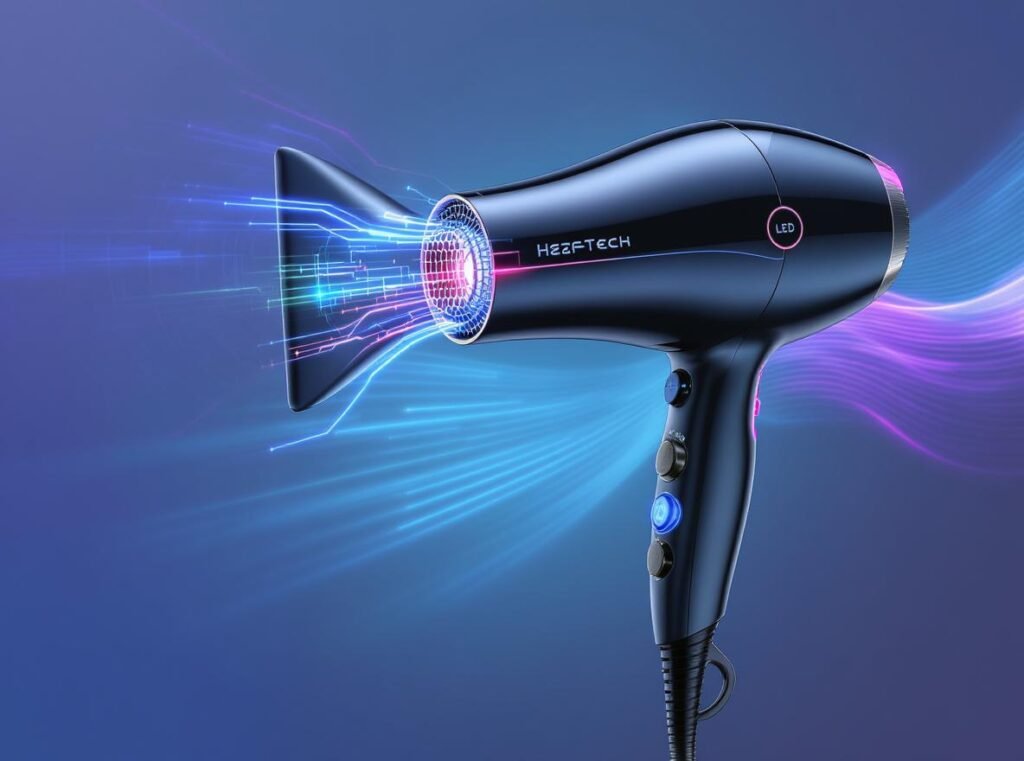
Multi-Layer Safety Systems
Advanced Thermal Protection
- Multiple thermal sensors with different temperature thresholds
- Bimetallic strips that bend at preset temperatures
- Automatic shut-off mechanisms with manual reset capability
- Smart temperature regulation preventing overheating
Electrical Safety Features
- ALCI protection against water immersion hazards
- GFCI (Ground Fault Circuit Interrupter) integration
- Immersion protection meeting federal safety requirements
- Surge protection for voltage fluctuation resistance
Physical Safety Enhancements
Protective Design Elements
- Protective screens preventing foreign object entry
- Heat-resistant materials and improved insulation
- Removable lint screens for easier maintenance
- Automatic cool-down cycles reducing thermal stress
Professional-Grade Features
- Higher duty cycle ratings for frequent operation
- Enhanced durability for commercial environments
- Easy maintenance access for cleaning and repairs
- Clear documentation of safety specifications
What Should Businesses Look for in Hair Dryer Safety Features?
Selecting hair dryers with proper safety features protects both customers and business liability while ensuring regulatory compliance and market acceptance.
When choosing hair dryers for business use, prioritize models with UL 859 certification, CPSC compliance, multiple thermal protection layers, ALCI/GFCI protection, and comprehensive safety documentation that meets international standards.
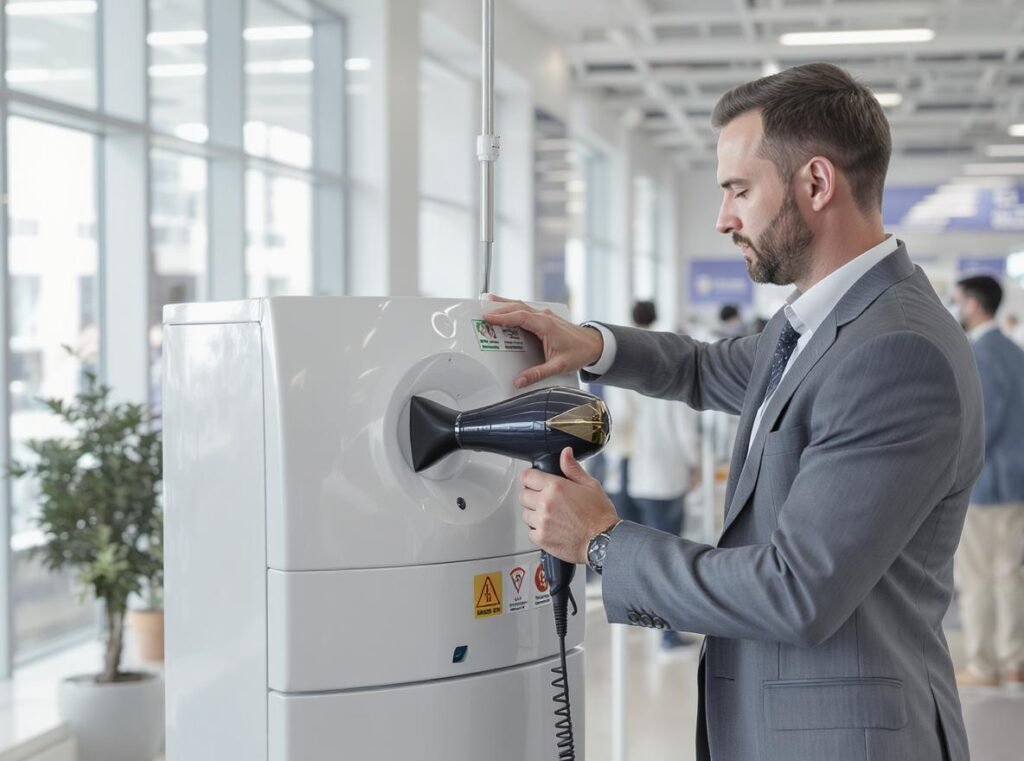
Essential Safety Certifications
Regulatory Compliance Requirements
- UL 859 certification for household electric grooming appliances
- CPSC federal safety rule compliance (16 CFR Part 1120)
- IEC 60335-2-23 compliance for international markets
- Recognized testing laboratory certification marks
Professional Standards for Business Use
- Multiple thermal protection levels with redundant safety
- Integral immersion protection (ALCI or GFCI)
- Proper thermal fuse ratings for expected usage patterns
- Durable construction for frequent commercial operation
Business-Critical Safety Features
Liability Protection Elements
- Comprehensive safety certifications from recognized laboratories
- Clear warning labels and operating instructions
- Proper documentation of safety specifications and testing
- Manufacturer reputation for safety and reliability
Operational Safety Requirements
- Automatic shut-off timers preventing overheating
- Cool-down periods between usage cycles
- Temperature limiting controls for user protection
- Electrical surge protection for equipment longevity
Quality Investment Considerations
| Feature Category | Basic Models | Professional Models | Premium Models |
|---|---|---|---|
| Thermal Protection | Single fuse only | Fuse + sensors | Multi-layer systems |
| Safety Certifications | Basic UL listing | Multiple standards | International compliance |
| Electrical Protection | Standard fuse | ALCI/GFCI ready | Integrated protection |
| Business Features | Consumer focus | Professional durability | Commercial-grade |
| Documentation | Basic manual | Safety specifications | Comprehensive compliance |
Laifex P1C Professional Safety Features
The Laifex P1C exemplifies modern safety innovation with comprehensive protection systems designed for demanding business environments:
- Multiple thermal sensors: Monitor both air temperature and component heat
- Advanced overheating prevention: Automatically adjusts power maintaining safe temperatures
- Professional-grade construction: Built for commercial durability and reliability
- International safety compliance: Meets UL, CPSC, and IEC standards
- Enhanced airflow design: Optimizes cooling for extended operation periods
These features provide superior protection compared to basic thermal fuse-only systems, making them ideal for businesses requiring reliable, safe operation with minimal maintenance requirements.
Summary
Hair dryers absolutely contain thermal fuses – essential safety devices that prevent overheating and fire hazards by automatically cutting power when temperatures exceed 257°F to 302°F. Modern professional-grade units incorporate multiple protection layers including ALCI protection, automatic shut-off, and advanced temperature control systems. For businesses, choosing hair dryers with comprehensive safety certifications and multi-layer protection provides better liability protection and customer satisfaction.
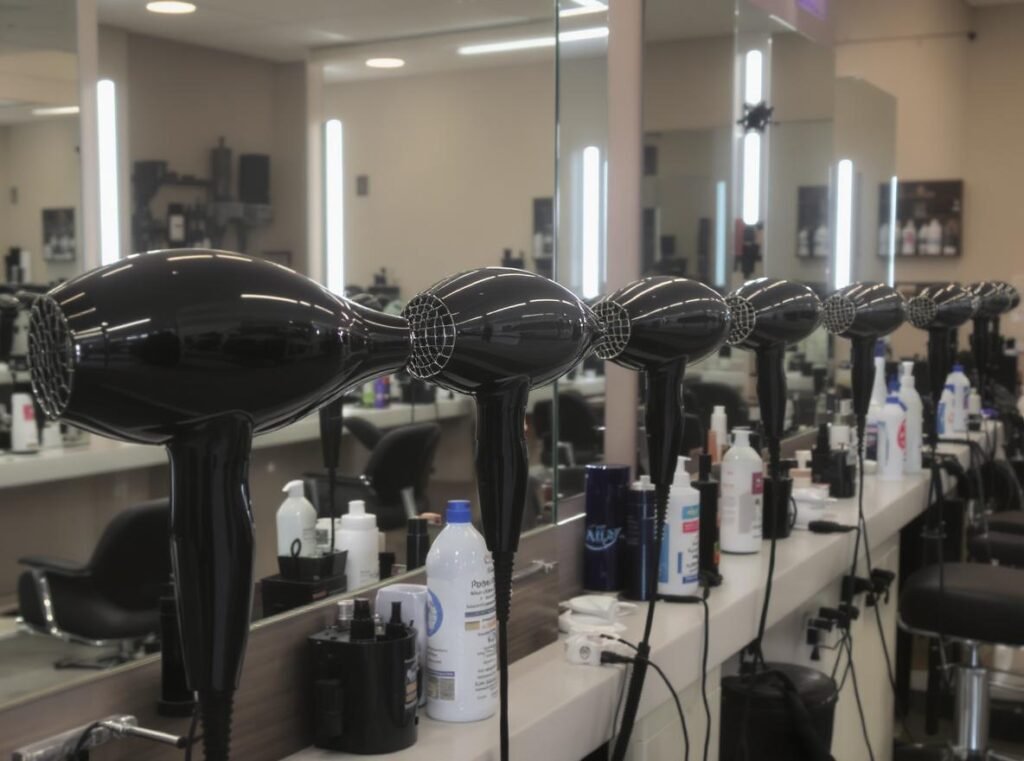
Ready to explore professional-grade hair dryers with advanced safety features? Browse our complete Laifex product line at https://laifex.com/p1c-hair-dryer/ or contact our team to discuss wholesale opportunities that prioritize both performance and safety for your customers.

